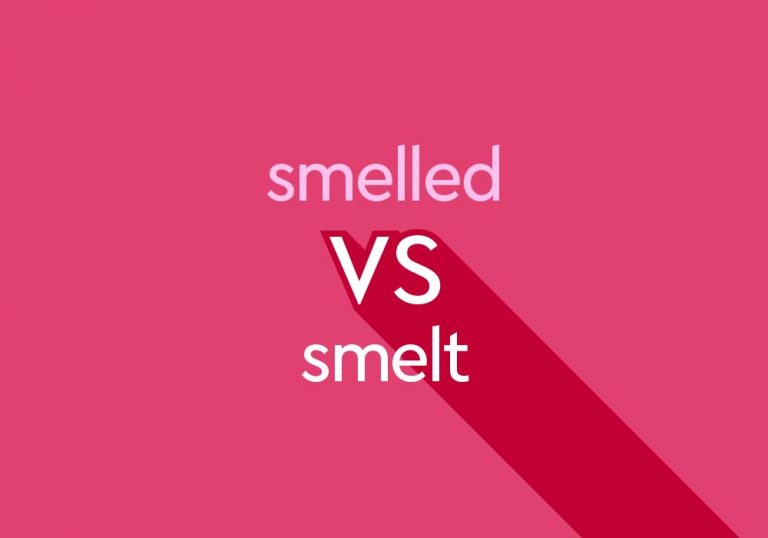“Smelled” vs. “Smelt”: How To Sniff Out The Difference

Chances are, you use the word smelled somewhat frequently. But what about smelt? Is it a word? And, if so, does it mean something different than smelled?
In this article, we’ll answer all of these questions and more until your brain knows the difference without a whiff of confusion.
⚡ Quick summary
Both smelled and smelt are correct forms of the past tense and past participle of the verb smell. Of the two, smelled is far more commonly used in American English. Smelt is sometimes used in British English and some other varieties.
Is it smelled or smelt?
Both smelled and smelt can be used as the past tense and past participle forms of the verb smell. In both cases, they can be used interchangeably. However, smelt is much more rarely used, especially in American English.
Here’s an example of smelled and smelt being used in the past tense: I smelled/smelt that earlier, but I couldn’t tell what it was.
A past participle form of a verb can be used to form the present perfect verb tense (have smelled/smelt) or the past perfect verb tense (had smelled/smelt).
Here’s an example of smelled and smelt being used in present perfect form: I have smelled/smelt the cookies, and now I need to have one!
And here’s an example in past participle form: I had smelled/smelt the odor earlier in the day, but I didn’t have time to investigate.
Note that smelt is also the present tense form of a verb used in the context of refining metal (past tense smelted).
Is smelt regular or irregular?
The past tense and past participle of most verbs are formed by adding -ed or -d to the end of the root form of the verb—as is done when forming smelled from smell. Verbs whose past and past participles follow this general rule are called regular verbs, whereas verbs that don’t act this way are called irregular verbs.
Learn more about irregular verbs with our comprehensive guide.
Though smelt is sometimes considered to be an irregular form, adding -t to form the past tense or past participle is mostly the same as adding -ed. Although the final l is dropped from the end of the word to accommodate the addition of the -t, this change is not like the more drastic spelling changes seen in irregular verbs, such as when catch changes to caught.
But smelt isn’t the only verb that ends this way.
Examples of -t in past tense and past participle forms
The use of -t when forming past tense or past participle is thought to be influenced in part by speech patterns (meaning that, in some cases, the dominant form likely emerges simply because it’s easier to say).
Some verbs that add a -t instead of -ed or -d add it directly to the end of the word without any other spelling change.
Examples: dream becomes dreamt; learn becomes learnt
Sometimes, though, the spelling and vowel sound in the middle of the word can change along with the ending.
Examples: feel becomes felt; sleep becomes slept
Some verbs only use the -t form in their past and past participle forms.
Examples: creep becomes crept; sleep becomes slept; weep becomes wept; keep becomes kept
Note that some -ed forms, such as sleeped and keeped, are never used and are considered incorrect.
In other cases, both the -ed and -t forms of a verb are used.
Examples: smelled and smelt; burned and burnt; dreamed and dreamt; learned and learnt; kneeled and knelt
Sometimes, both forms are used with relatively similar frequency, as in the case of burned and burnt. In other cases, one of the two forms may be much less commonly used than the other. For example, kneeled is much less commonly used than knelt, and smelt is much less commonly used than smelled (particularly in American English).
Check how much you have learned with our quiz
Now that you’ve had the chance to review how and when smelled and smelt are used, take our quiz on these two forms of the past tense of smell. You may surprise yourself with what you’ve learned!